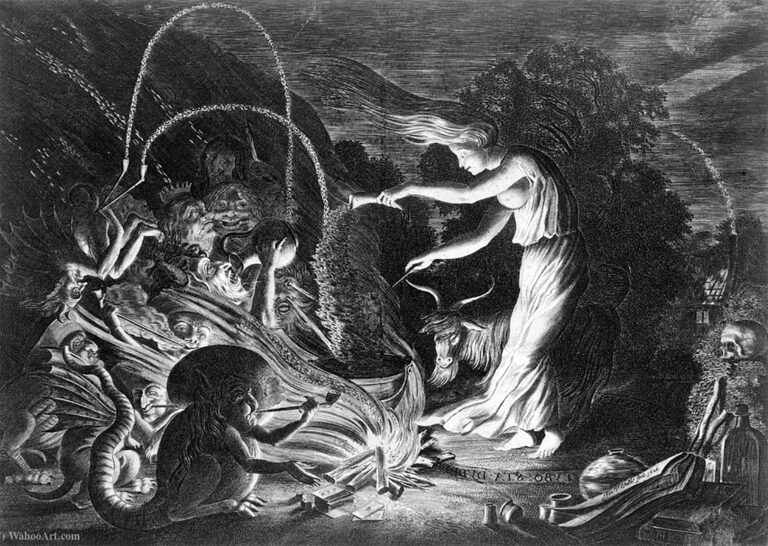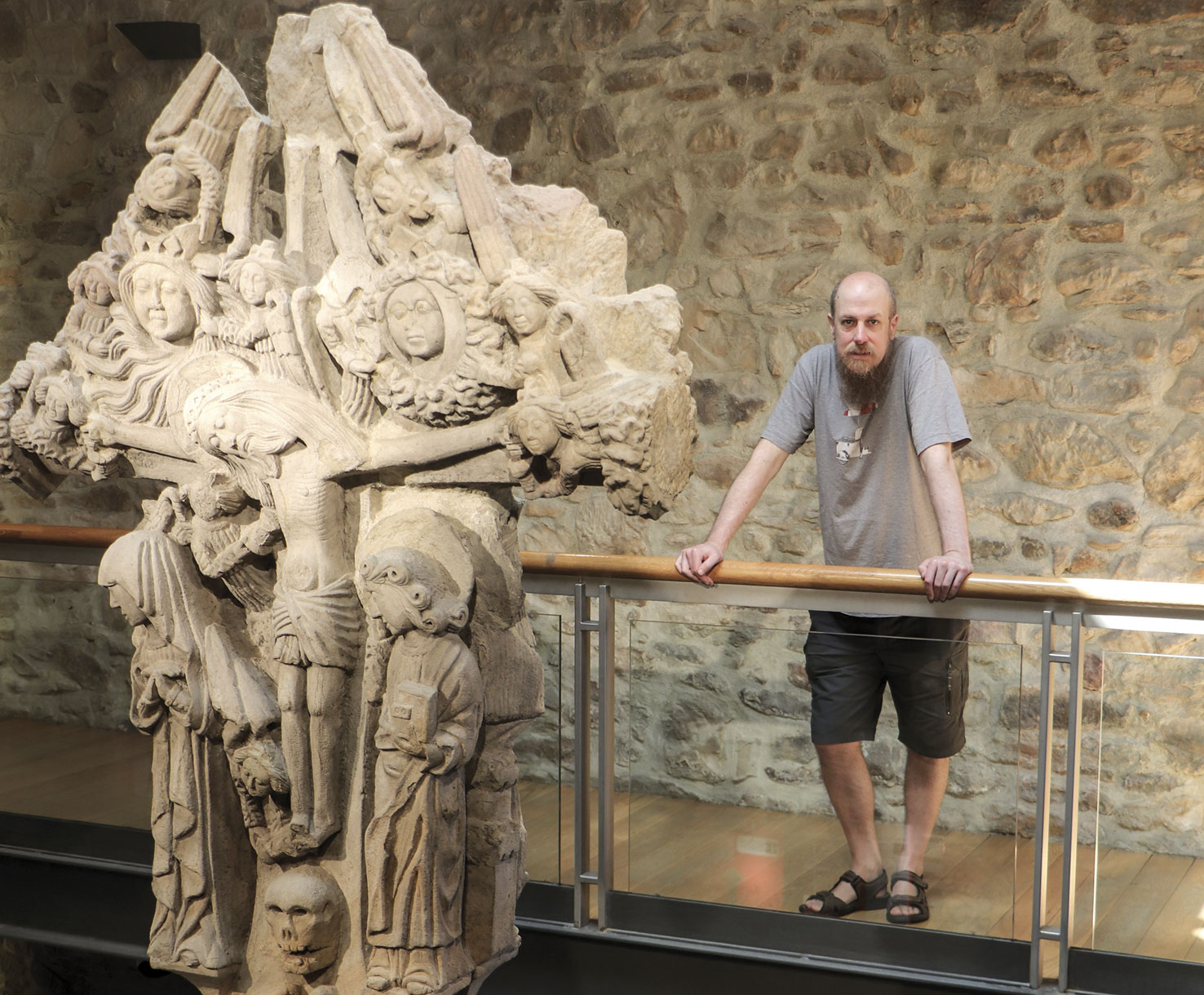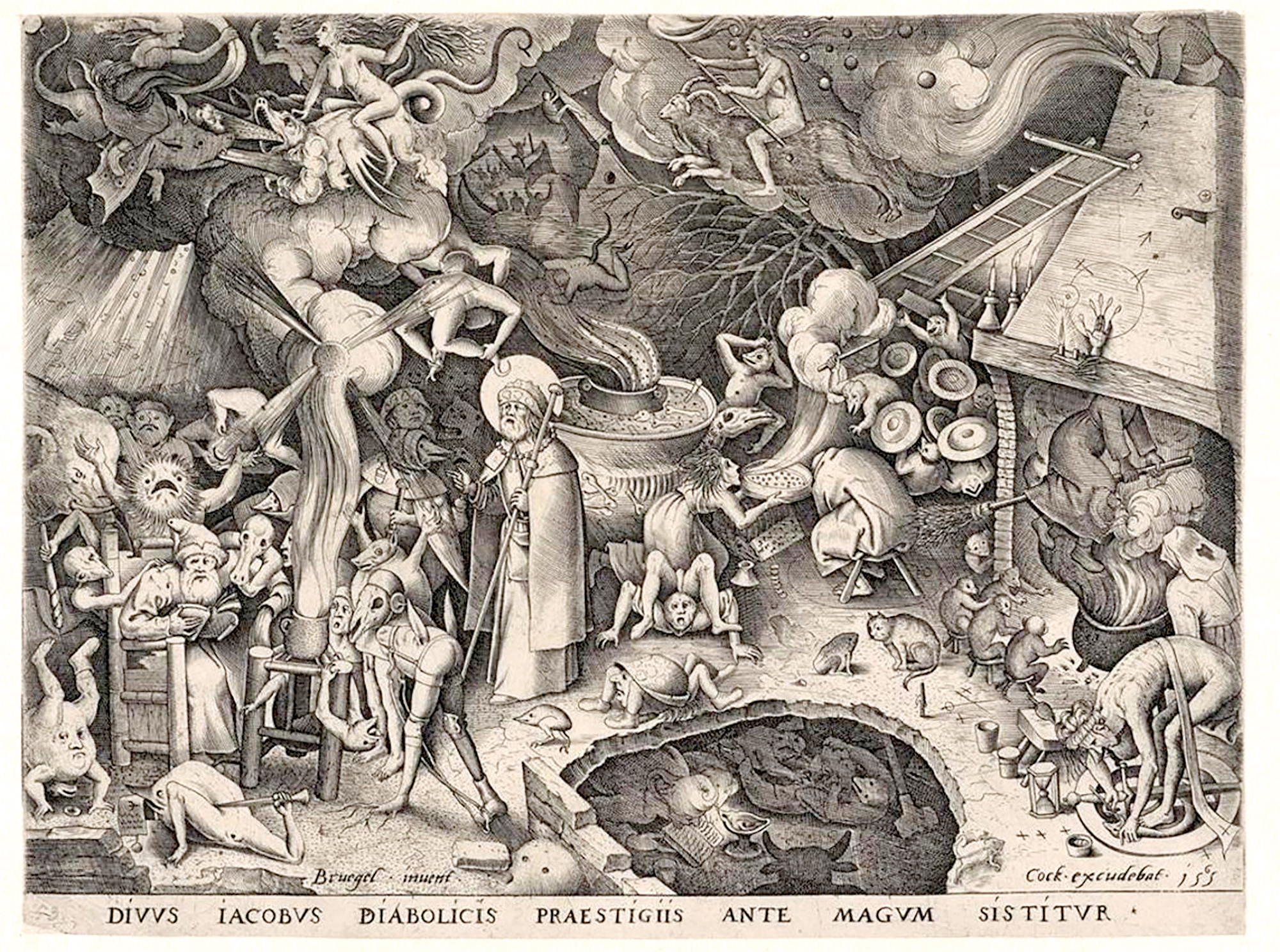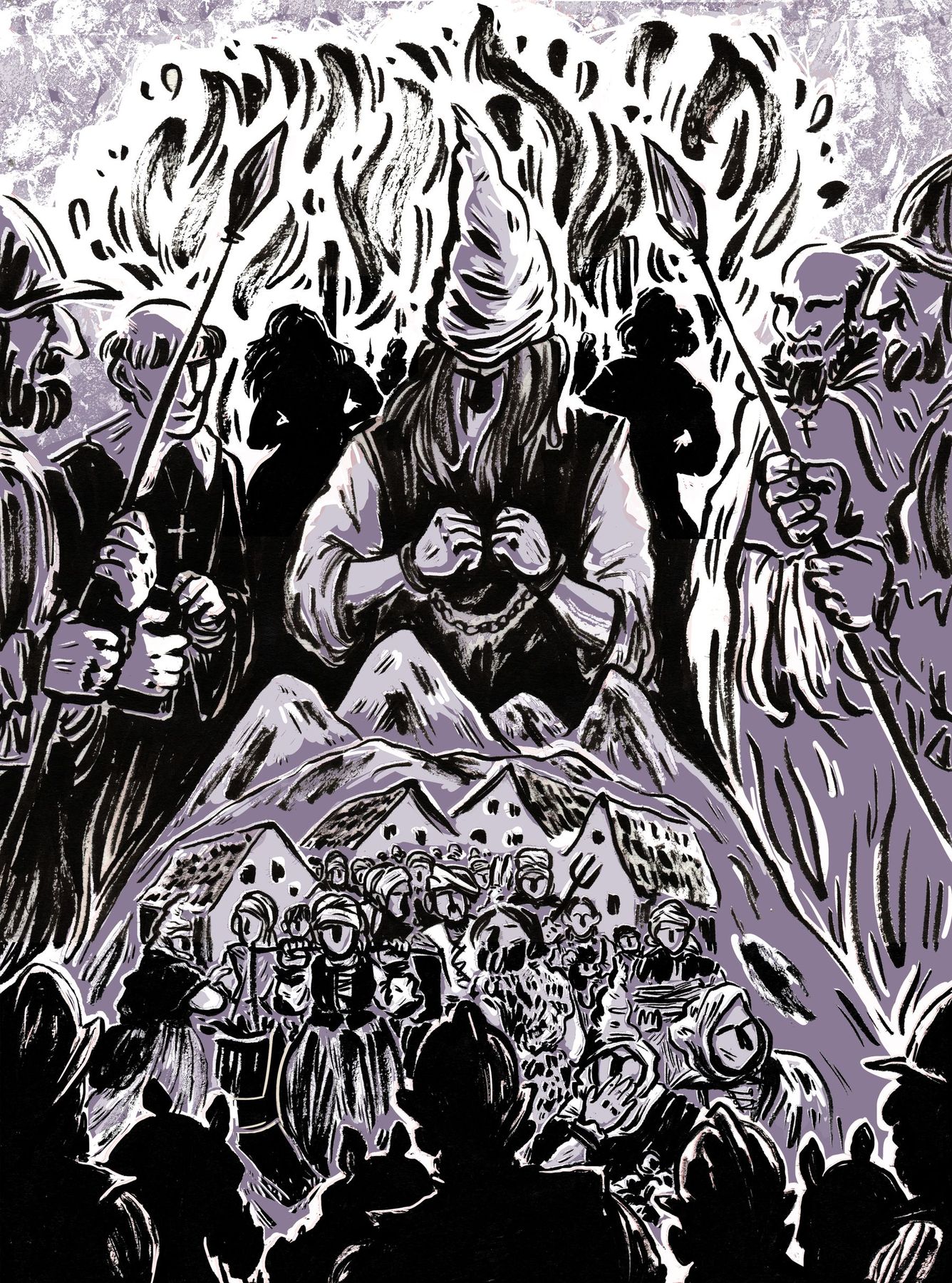No trace of Federici in 'Akelarre'
- Pablo Agüero's film wants to emphasize that witch hunting was a femicide, but the heteropatriarchal gaze of the director frustrates the feminist intention. The story revolves around the erotic obsession of the inquisitor by a kind of Basque Sherezade. Widows, healers and midwives to which feminist researchers refer do not appear. (The original version of this article has been published in Spanish by Pikara Magazine. ARGIA brought him to Euskera.)

(Heed! Spoilers a raudales)
I recognise that I have seen Akelarre subject to negative criticism. A friend who works in film made me the spoiler of the end, paraphrasing Audre Lorde: "My master's instruments will never derail my master's home." In addition, I saw her partially on a tablet, while my daughter was trying to draw my attention. So maybe my opinion would have been different if I had immersed myself in a big screen, unprejudiced, willing to enjoy entertainment. My main motivation was to enjoy the soundtrack of Aranzazu Calleja and Maite Arroitajauregi, fascinated by the magic they have shown when receiving the Goya to the best original music. And so it has been, I've spent days singing and dreaming of feminist akelarres: "We don't want more heat than the fire of your kisses."
Akelarre's intention is to tell that witch hunting was a femicide organized by the misogynistic power and legitimized by religious fundamentalism. History is situated in the 17th century, in a coastal town of the Basque Country. Men are seafarers and the freedom that their absence gives to women seems unacceptable to the Inquisition. The film is starred by six teenage girls who have been accused of organizing the Sabbath ceremony to contact the devil. In an interview with Yune Nogueiras, one of the actresses of the program, it can be seen that the choice can serve to attract the interest and empathy of young people: "Akelar opened my eyes and made me see the world of witches in a different way. Until then, what they had taught me about witches, in the first place, was that they were of a different age. Well, they weren't girls today, but if that's what we think it is to be a witch, today we should all be witches. They were young witches, as I am now, who wanted to have fun and who cut their wings to have fun.
On the contrary, the majority profile of women convicted of witchcraft was very different, according to feminist researchers. In a report on the campaign "They were not witches of Catalonia", they were women, Meritxell Guàrdia and Serentille describe them as follows: "Widows, female healers, independent women, migrated, poor, marginalized, women who did not perform gender roles. In total, 300 years of torture and repression were one of the biggest episodes of feminicide in our history. And, in addition, it served to control and usurp the reproductive activity of women and the medical knowledge of the ancestors".
That is, I have no doubt that the Inquisition judged the young women for going from juerga to the forest, drinking wine, eating fungi and talking about sex. But the women who were in the spotlight were others, which you can't see in Akelarre, because in the movie there are no healthy, midwives or migrated women. However, the only contribution of the only elderly woman in the film is to give the protagonist a recommendation that Audre Lord rejects: that he use his youth and his beauty as a weapon to change his power relationship with the inquisitor. Imagine how different the development of history would be if that old sage had prepared a potion to intoxicate feminices!
Many criticisms have presented Akelarre as a feminist allegation, but this intention clashes with the heteropatriarchal gaze of the director.
Male gaze
Akelarre is a film directed by Pablo Agüero, an Argentinian filmmaker who signs the screenplay together with Belgian Katell Guillou and has the collaboration of ETB. Many criticisms have presented Akelarre as a feminist allegation, but this intention clashes with the heteropatriarchal gaze of the director. He reminded me of Abdellatif Kechiche, director of the film The Life of Adele. The blue is a warm color is an adaptation of the graphic novel and Julie Maroh, author of the comic book, strongly criticized Kechiche for his "surgical, cold, pornographic and disgusting demonstration" of the female sex. Akelarre has no sex scenes, but the script has put at the center of the second part of the film the sexual tension between the judge and the judge.
I remember an article published by Alicia Macias in Pikara Magazine when the camera caressed the naked shoulder and back of Ana Ibarguren's character. He explained the concept Male gaze, proposed by film theorist and feminist Laura Mulvey, useful to describe audiovisual works that satisfy the wishes of heterosexual men. There are three male looks: the man behind the camera, the male character and the male spectator. I've noticed this dynamic when Ana pretends an orgasm for the enjoyment of the judge, like when Meg Ryan's character found Sally in comedy.
In addition, of the six young people (surprise!) The protagonist is a beautiful normativist girl who can embody the sexual fantasies of the villain and also those of the creator of the film. The inquisitors cut off their friends' hair to humiliate them, but save Ana's long hair. It's a pity to see the strength of the carbon heroes, shell icons, like Lieutenant Ripley in Alien, Mad Max's Furious Imperator, or Vendeta's V's Evey Hammond.
Likewise, the patriarchal view deteriorates the relationship between young people condemned to fire. The script has paid all attention to Ana and has blurred the most secondary characters in the scene. The protagonist's leadership is vertical; she is the only one to correct the defensive strategy, without listening to the concerns and contributions of her friends and without the support of the women of the people. And their strategy is not to organize a revolt of women, but to gain time in the hope that they will be saved by the sailors. In the last scene, Ana decides how to escape the abyss and the others follow him. I've imagined their parents making them reproach.
In short, films use feminist slogans like “There is nothing more dangerous than a woman dancing”, but they are insignificant because the heteropatriarchal look always prevails. This view, moreover, does not favor originality. That is to say, the story that Akelar tells us is that of always, because it looks like the western version of Sherezade.
It would be more transgressive, for example, if the psychotropic dildos told us by the Bilbaíno writer Aixa de la Cruz in his Dictionary of War appeared: "Beleño, estrammonium, mandragon and belladonna were used to relieve labor pains. According to some anthropologists, witches also prepared to fly in the aquelarres to make an ointment. Witches have been depicted on the broom because they rubbed the broom pole with ointment and threw it through the branches.”
Of the six young people (surprise!) The protagonist is a beautiful normativist girl who can embody the sexual fantasies of the villain and also those of the creator of the film. The inquisitors cut off their friends' hair to humiliate them, but save Ana's long hair.
Feminist review
Silvia Federici explained in the Caliban eta sorgina essay that witch hunting was a strategy used by factual powers in the creation of capitalism and the modern state. The experience of common life and the distribution of wealth served to suppress, at the time of the slave trade and the conquest and expoliation of America. According to Federici, "the Church used the charge of heresy to attack all kinds of social and political insubordination", as well as to oppose sexual attitudes against their morals such as the use of contraceptive methods and group sex.
Also, Bruges' essay, midwives and nurses kicked off Barbara Ehrenreich and Deridre English with most of the women convicted as non-professional doctors who cared for the peasants and that the birth of patriarchal medicine resuscitated by the rich was based on their repression.
But Akelar doesn't report it. The script focuses on the inquisitive interrogation and does not dare to represent the violations and disobedience of women judged by heresy, beyond feeding the myth of the Basque matriarchy in a diffuse manner. I read in a film magazine that the film does a "smart review of witch hunt," but I would say that those who have written the script have not acknowledged or taken into consideration the review that feminist researchers have made.
One of them, Amaia Nausia Pimoulier, was rapporteur at the first feminist meeting on the history of witch hunting in Pamplona in 2019 and has acknowledged to me on Twitter that he has not seen Akelarre because he is afraid of it. “Only in view of the actresses (young, beautiful), I can assure you that they do not correspond to the profile of the women (widows, elderly) denounced by the spell. The story was very different. XVI-XVII, The consolidation of the Patriarchate, the creation of capitalism and modern states = Social discipline.”
Perhaps the film serves to generate interest in witch hunting and to guide the public to this feminist collective knowledge. I expected that to be the case.
For a matter of work, I had to reread this wonderful book. A short book that brings together feminist theory, genealogy and history, and that will surely have a lot of criticism looking on the net and, surprise! I found one, which Irati Majuelo wrote in Berria.El book published... [+]
The Christian religion ended the knowledge, wisdom and self-management of witches, imposing thought and, therefore, a certain life. They were tortured, raped and killed. With the intention of moving these religious convictions to every corner of Europe, many citizens engaged in... [+]
Ezin zenbatu sorginen inguruan egindako liburu, film, erakusketa, hitzaldi eta souvenirrak Euskal Herrian. Baina gehienetan ohiko galderak baino ez dira iradokitzen, ea emakume horiek zer egiten zuten, ea benetan elkartzen ote ziren akelarrean, ea zer droga hartzen zuten, ea... [+]
“Koronabirusak mundua lurralde ezezagun batera eraman du” esan zuen Munduko Osasun Erakundearen zuzendari nagusiak Covid-19ak zuzenean eragindako heriotzek 3.000ko langa gainditu zutenean. Planetako agintariak alor bat baino gehiagotan aurkitu dira bide-orri garbirik... [+]




















